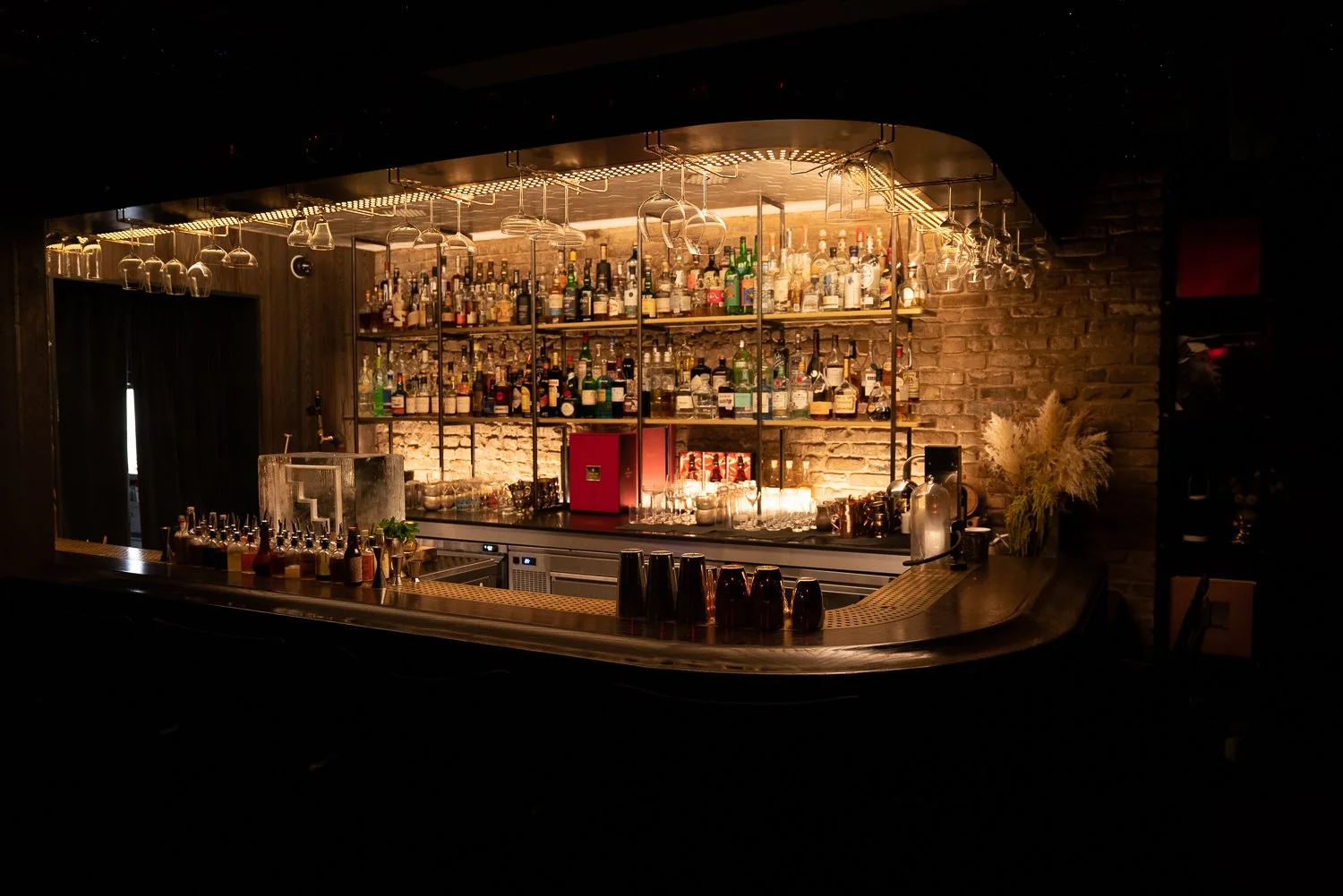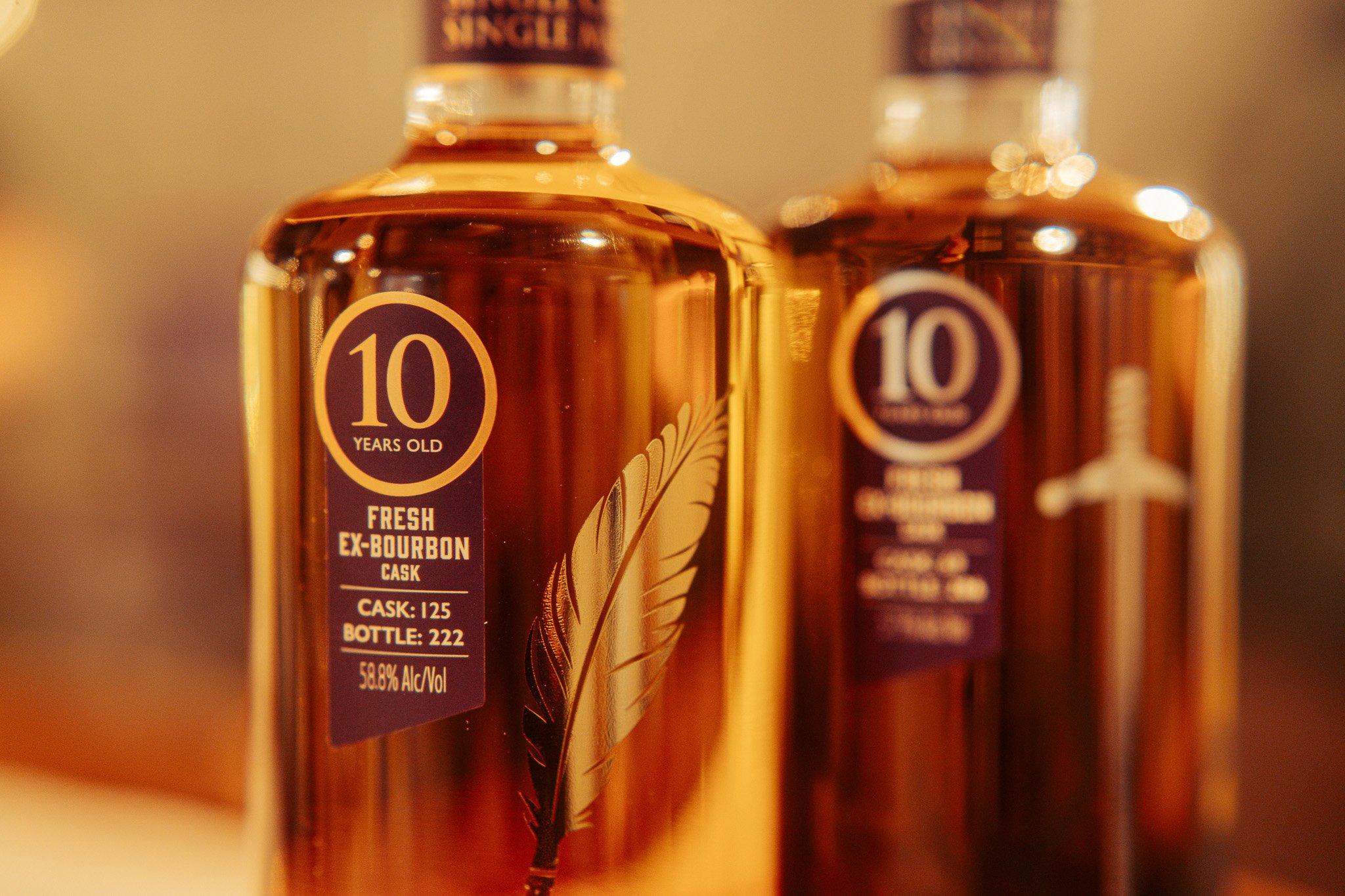From field to kiln — the wild life of barley
From harvest to the ‘dark chambers’ of the Port Ellen maltings on Islay, the journey of a barley seed is tumultuous and unforgiving. But it’s also a magnificent, life-giving adventure, writes Alba Chiara Di Bari, in this original essay
At the end of every summer, on the gentle British hills, the yellow crops moved by the wind whisper the tale of John Barleycorn, born and sacrificed for the greater human good. His modern descendants face their destiny with the same sturdiness of character, surviving in a dormant state a violent harvest carried out by machines. In a cloud of dust and cereals, they are shaken off the heads of their parents and, before the first autumn rains, sent across Great Britain in the belly of boats. Some of the lucky ones reach the west coast of Scotland, to be malted at Port Ellen, on Islay.
Here, the barley is thrown into one of the eight cylindrical steeping pools together with 25 tons of its siblings and flooded with slightly peated water. The hazelnut-coloured liquid from Leorin Lochs, three miles away from the maltings, hugs the dormant seeds like gentle rain. Responding to a billion-year-old instinct, as the first few molecules of H2O infiltrate the husks, the barley germs awaken from their sleep. Their endosperms begin creating enzymes to break their cell walls — this allows the embryos to access a pack lunch full of energy and starches. Unluckily for John Barleycorn, the distiller is on the hunt for one of these enzymes, the amylase, which will later aid fermentation, transforming the starches into sugars for the famished yeast.
After a few hours the rain relents, letting the embryos breathe oxygen for the first time. Below their firm coats, an internal chain reaction is in full motion. Another intense flood of water arrives, but this time a raging earthquake shakes the pool. Sharp bubbles of compressed air rise from the bottom of the steeping vessel, fiercely knocking the kernels upside down in their journey to the surface. A few hours of this diving routine and some seeds have drunk so much that they are almost ready to burst.
When the fresh water drains for a second time, the most curious germs dare peering out of their kernels with the head of a white root. Inside, the enzymes are slowly removing the barriers to the starches and supplying them with the energy to break free. Another bubble bath arrives to aid the ones lingering behind in their growth; humidity is increased to exactly 44%, as the maltster prefers.
‘Another intense flood of water arrives, but this time a raging earthquake shakes the pool… A few hours of this diving routine and some seeds have drunk so much that they are almost ready to burst’
At this point, after two days of intense rain and sudden droughts, the germs are weary of their steeping situation and, like teenagers, ready to put roots elsewhere. They devour water and oxygen and shamelessly sweat heat and carbon dioxide, leaving them behind like childhood dreams. As the water withdraws a third time, the germs’ odour is sweetened from wet cardboard to malted milk, convincing the maltster it’s time to move them into one of the seven germination body drums.
A bumpy slide brings the barley into a dark horizontal cylinder, where 82 tons of seeds are mounted on top of each other on the sides of a flat perforated surface. After a few nervy seconds of wait, the walls — conveniently accessorised with corkscrew fins — start rotating, like in a haunted house. The seeds join the ride, and after two full circuits, they are spread evenly and naturally on the floor, resembling a crowd patiently waiting for a concert.
A humid warm wind blows in from below the floor, creating the perfect cosy habitat for the germs to sprout. A vague aroma of late spring and strawberry yogurt fills the drum, as the rootlets grow, looking for nutritious soil to cling to. Fighting with their neighbours, they catch their roots in uncomfortable hugs, that every eight hours are gently disentangled every eight hours by the rotating drum.
‘As the barley becomes green malt is gives off notes of late summer mornings and fresh cucumber. It is the sign for the maltster to move a lever and let the germs precipitate onto a long conveyor belt, the last roller-coaster of their lives’
For five days the seeds party, roll, and germinate in the cylinders, until their enzymes break all the protein resistance to the starches and timid green spikes start appearing beside the rootlets, in search of light. The maltster examines them every day, handpicking a few now and then to check that their shoot, that he calls acrospire, is more than two-thirds of the length of the seed. If not convinced, he briskly rubs the seeds between his fingers, breaking the husks apart to inspect the white starches inside.
At the right time and consistency, when the barley becomes green malt, it gives off notes of late summer mornings and fresh cucumber. It is the sign for the maltster to move a lever and let the germs precipitate onto a long conveyor belt, the last roller-coaster of their lives.
Abandoned in the dark chamber of one of the three kilns at Port Ellen, flat on a floor with tiny holes, the sprouts relax as the temperature rises once again. After all that turmoil, they anticipate a chilling steamy sauna to end their odyssey. A gentle smoke tasting of salty seaweed and rugged driftwood raises from the floor of the kiln, revealing the presence of another local inhabitant.
Hand-harvested from Castlehill, north of the maltings, Islay peat spent thousands of years silently listening to the wind bringing stories of Celts, Vikings, and Lords of the Isles. The peat was here when the giant Port Ellen drums were transported from the mainland on boats and cars in the 1970s, and it will continue living inside an oak barrel long after being burned, possibly to be drunk decades later, on an island at the opposite side of the world.
‘Darkness and reek continue relentlessly for sixteen hours, turning what smelled like a pleasant summer with jovial barbecues, into a scorching medicinal fire of bushes and woods’
Still hot from the warm germination temperatures, the barley seeds are at first happy to receive the phenols. Intrigued by the novelty of the earthy lapsang flavours, the shoots breathe in, letting the smoke pour into their inner cells.
Darkness and reek continue relentlessly for sixteen hours, turning what smelled like a pleasant summer with jovial barbecues, into a scorching medicinal fire of bushes and woods. Little by little, the smoke becomes unbearable, the acrospires grasp for oxygen, the roots pray for water.
After another ten hours of fiery sauna, all the barley shoots are dehydrated, with 3% of humidity in their bodies, dark mustard skins, and yellow rootlets. Inside, their energy reserves are almost intact, ready to be picked by the distiller like ripe apples. The peated malt is stripped of its rootlets and sprouts, and put to rest in silos, producing the sweet biscuity aroma of breakfast cereals.
Its life might seem over, but the barley’s journey has just begun. Its purpose is bigger than its simple existence, something more than becoming a simple grain plant.
Centuries of knowledge and hard work made modern distilled spirits possible, and all would be in vain without John Barleycorn’s initial sacrifice. Soon, the peated malt will leave once again towards one of the famous Islay distilleries, where more adventures await. Adventures worth telling with a dram of Lagavulin, Caol Ila, or maybe Port Ellen, in hand, while the embers crackle in the fireplace.





